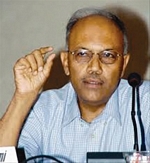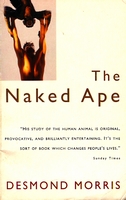-->
Rating: 3 Star
Title: The Tiger Vanquished – LTTE’s Story
Author: M R Narayan Swamy
Publisher: Sage Publications 2011 (First published 2010)
ISBN: 978-81-321-0459-9
Pages: 188
M R Narayan Swamy is a reputed journalist who began his career in 1978. He has worked for premier news agencies like UNI, AFP and IANS. He focused on Sri Lanka while on his job and developed an in-depth understanding of the ground realities. He is the executive editor of IANS news agency at present. He is also the author of two path-breaking books on Sri Lanka. The first, Tigers of Lanka (1994) describes the origins of Tamil militancy and the second is Inside an Elusive Mind (2003), the unauthorized biography of the enigmatic leader of Tamil tigers, Velupillai Prabhakaran. Both books are a must read for all those trying to understand Tamil militancy in Lanka.
The current title is a collection of articles and columns the author has published in news papers, magazines, web sites and as syndicated items for foreign publications. Right from 2003, when the Norway-sponsored peace process just began floundering on the hard rock of LTTE’s obstinacy, the author carries on the narrative till Prabhakaran’s death at the hands of Sri Lankan soldiers in May 2009. He has faithfully reproduced the rise and fall of the world’s most dreaded non-religious terrorist organization. With the characteristic mix of rigour and wit, Swamy’s incisive analyses of the realities in Sri Lanka evoke spontaneous admiration from the reader. Though the chapters are reproduction of articles authored by Swamy over a range of years, a comprehensive introduction spanning about half of the main text effortlessly strings them all together.
Tamils began to be estranged in Sri Lanka right from the country’s independence in 1948 and power fell into the hands of Sinhala nationalists. Too small to be a federal republic and too large to be a unitary state having two prominent, belliegerent communities, Lanka is a peculiarity in every sense of the word. Tamils’ alienation prompted several young men to take up arms in the 1970s. Velupillai Prabhakaran (1954 – 2009), left his home in 1972 for the cause and assassinated the government-backed Tamil mayor of Jaffna in 1975. This was the first crime committed by a terrorist mastermind who didn’t place any value on human lives. LTTE was founded in 1976, with only a handful of supporters. Prabhakaran spent a lot of time in India at the beginning of 1980s and got arrested over violent behaviour in Chennai. He was bailed out and he returned back to Sri Lanka. The notorious anti-Tamil pogrom in 1983 infuriated even the moderate members of Tamil society, which gave a new life to LTTE, which was already advocating armed struggle against the state. Procuring weapons from abroad and receiving military training in India, LTTE grew to be a major force in Lankan politics. Once gained power, LTTE went against Sinhalese and Tamils alike. Prabhakaran ordered the massacre of Buddhists at Anuradhapura in 1985 and eliminated Tamil rival groups like TELO and PLOT. Attacks and counter attacks put the hapless civilians in a desperate situation, when India air-dropped relief material, in defiance of Sri Lanka’s sovereignity. Then Prime Minister, Rajiv Gandhi took special interest in Lankan affairs and was the brain behind the India-Sri Lanka peace accord of 1987.
The accord, even though the best Tamils could’ve obtained at any time since history, didn’t go down well with extremists like Prabhakaran who was unwilling to accept anything below a full fledged Tamil state, called Tamil Ealam. LTTE refused to disarm, as stipulated in the accord, forcing the Indian Army to move against them militarily. After two years of bloody conflicts in which the Indian side lost 1200 of its men, India withdrew its troops in 1990, when Rajiv Gandhi was voted out of power in 1989. The non-Congress government which ruled in Delhi in 1989-91 was very weak and collapsed in 1991. Prabhakaran genuinely feared that Rajiv may swing back to power who might reintroduce troops to Sri Lanka. LTTE assassinated Rajiv in a carefully orchestrated suicide bomber attack near Chennai in 1991, which turned out to be the greatest blunder committed by the organization. India outlawed LTTE as a terrorist outfit in 1992, hunted them out from Tamil Nadu and greatly helped Lankan military through hardware and personnel. Sri Lankan president Ranasinghe Premadasa, who held anti-Indian attitude actively helped the Tamils to fight Indian troops. However, LTTE was a dangerous ally to play with and Premadasa found it too late when he too was killed in a suicide bomb attack in 1993.
Chandrika Kumaratunga and her UNP assumed power in 1994, who desired to give peace a chance. Talks reached nowhere, and LTTE declared Eelam War III against the state. After three years of military stalemate and surviving an assassination attempt on her own life, Kumaratunga sought help from Norway as a facilitator of the peace process. The peace initiative was initiated with covert Indian support and the two sides agreed to a landmark Ceasefire Agreement (CFA) in 2002. Prabhakaran addressed his first open press conference in April that year when things looked bright for a political settlement in the war torn island nation.
People who thoroughly knew the LTTE from the inside and outside were aware that the man and the organization was not amenable to any peace offering. In 2003, just an year after the agreement was signed, Prabhakaran pulled out of peace talks. Also, the ceasefire was a new atmosphere for the battle-hardened LTTE cadres, who stagnated in the peaceful interval. The fighting spirit began to ebb, and partisanry creeped into the organisation. Prabhakaran’s trusted lieutenant and one time body guard, Vinayagamurthy Muralitharan, also called Karuna, broke away from the leader accusing him to be in the hold of unscrupulous aides in 2004. This was a great blow to LTTE. While the North and East of Sri Lanka was traditionally the strongholds of Tamils, Karuna’s rebellion made LTTE dominating only the north. Fratricidal warfare between the two factions further eroded the morale of Tamils.
LTTE continued its assassination program unabated, killing foreign minister Lakshman Kadirgamar in 2005, who was also a Tamil. LTTE disillusionment with premier Renil Wickremasinghe and his UNP instigated them to call for a Tamil boycott of Sri Lankan elections in 2005. This was their second greatest blunder. The absence of thousands of sympathetic voters from the ballot ensured the defeat of UNP and Mahinda Rajapaksa, of the SLFP ascended power through a narrow margin. Rajapaksa was determined to put an end to the LTTE menace. The Tamils’ failed suicide attempts against the brother of the premier who headed the defense establishment and against Sarath Fonseka, the military chief was too much for Lanka, which declared an all out war, thus inaugurating Eelam War IV. In 2007, LTTE was driven out of the east and after another year, Prabhakaran was cornered in a narrow strip of land. The all out effort of the military bore fruit in 2009 when it captured Kilinochchi, LTTE’s hub and Prabhakaran himself was killed on May 18, 2009, putting an end to LTTE and its quarter-century old struggle.
The book is very interesting to read, as it comes from the author of the only biography of Prabhakaran in English, though unauthorized. The other one in Tamil was by P Nedumaran, a pro-LTTE politician from Tamil Nadu. Swamy’s grasp of finer nuances of the Sri Lankan situation was evidenced in his prediction in 2002 that the peace deal brokered by Norway was bound to fail. The book is easy to read, with fine getup, printed on very good quality paper, quite uncharacteristically for an Indian edition. One thing to be stressed is the excellent writing style of Narayan Swamy. Most Indian authors are unconsciously affected by cliched Indian styles, but Swamy is totally immune to it. Indian English does not show up at all. The author’s reputation soared in 2002, when he disclosed for the first time that the peace deal was in fact prepared with active Indian assistance from behind the screens.
There are very few to be put on the negative side. The author’s obsession with vis-à-vis, is one such thing. The word appears many many times in the text and is a spoiler of linguistic charm exhibited otherwise. But, we must keep in mind that the articles were written over a span of several years and the author’s favourite phrase is liable to be repeated. A serious objection is regarding the structure of the book. After an illuminating introduction in which the author narrates all salient features of the conflict and how it was militarily resolved, the main text, comprising of chapters arranged chronologically, seems to be redundant. It introduces no new concept or idea and the repetition is disinteresting. The author could’ve gone for a full treatise on the Lankan conflict, thus widening the scope of his previous book, The Tigers of Lanka. Given the flowing style of the author, another book on the same topic will surely appeal to the readers.
The book is recommended.





















































